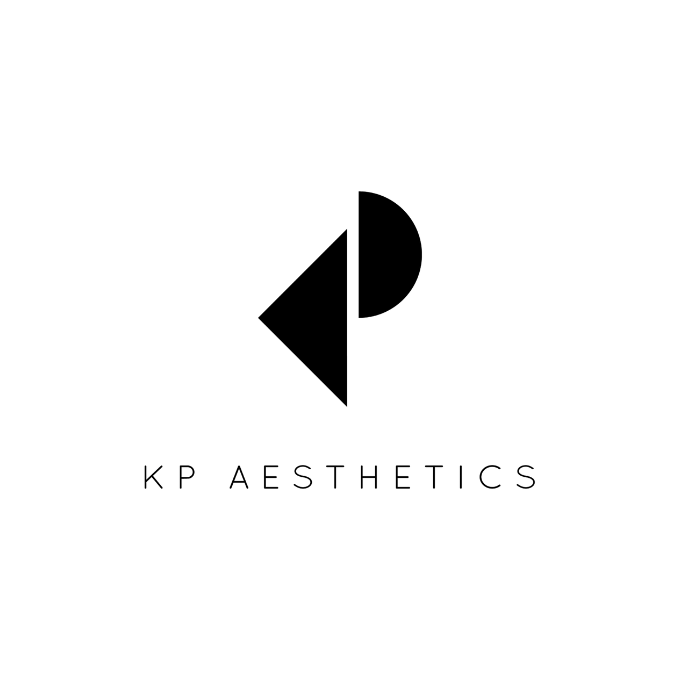When considering aesthetic enhancements, it’s crucial to understand not only the potential benefits but also the intricacies of the procedures involved. This is especially true for tear trough fillers, a popular choice for those seeking to rejuvenate their under-eye area. In this comprehensive guide, we delve into a key concern: Can tear trough filler migrate?
At KP Aesthetics, we believe in empowering our clients with knowledge, ensuring they make informed decisions about their aesthetic treatments. Let’s start by exploring what tear trough fillers are and their role in non-surgical cosmetic enhancements.
What is Tear Trough Filler? An Introduction to Non-Surgical Cosmetic Treatments
Tear trough fillers are a form of non-surgical cosmetic treatment, primarily used to address under-eye concerns such as dark circles, hollows, and fine lines. These fillers, typically composed of hyaluronic acid, are injected beneath the skin to restore volume and rejuvenate the eye area. This treatment, favoured for its minimally invasive nature, offers a quick and effective solution to refresh a tired-looking face.
At KP Aesthetics, we specialise in providing tailored treatments that harmonise with each client’s unique facial structure. Our expertise in administering tear trough fillers ensures results that are not just aesthetically pleasing but also natural-looking.
Next, we’ll explore what causes tear trough filler migration, a crucial aspect to understand for anyone considering this treatment.
What Causes Tear Trough Filler Migration?
Understanding the reasons behind tear trough filler migration is essential for anyone considering this procedure. Filler migration occurs when the injected material moves from its original site to surrounding areas. This can result in unevenness, swelling, or a distorted appearance, which is certainly not the desired outcome of any cosmetic enhancement.
Several factors contribute to filler migration. One of the primary causes is the overfilling of the treatment area. When too much filler is injected, it can migrate due to the pressure within the confined space. Another contributing factor is the natural movement and expressions of the face, which can displace the filler over time, especially in a dynamic area like the under-eye.
The choice of filler product also plays a significant role. Products with a higher viscosity and cohesivity are less likely to migrate. At KP Aesthetics, we meticulously select the most appropriate fillers tailored to each individual’s needs, ensuring optimal results and minimising the risk of migration.
Now, let’s delve into how tear trough filler migration can be prevented, ensuring you achieve the best possible outcome from your treatment.
Preventing Tear Trough Filler Migration
Preventing filler migration involves a combination of practitioner expertise and proper aftercare. At KP Aesthetics, our experienced practitioners exercise precision in filler placement and quantity. We employ advanced techniques to ensure that the filler remains stable and provides a natural, lasting result.
Aftercare is equally important. We advise clients to avoid excessive facial movements or pressure on the treated area shortly after the procedure. It’s also crucial to follow a tailored aftercare regimen, which we provide to each client, to support the healing process and maintain the filler’s position.
Next, we’ll explore the symptoms of tear trough filler migration, an important aspect for clients to be aware of post-treatment.
Symptoms of Tear Trough Filler Migration
Identifying the symptoms of tear trough filler migration is key to addressing any issues promptly. One of the most common signs is the appearance of puffiness or lumps in areas adjacent to the treated zone. This can indicate that the filler has moved from its original placement.
Clients may also observe asymmetry or unevenness in the under-eye area, which wasn’t present immediately after the treatment. In some cases, there might be a noticeable distortion in the shape or contour of the under-eye, which can affect the overall facial balance.
At KP Aesthetics, we emphasise the importance of follow-up consultations. This allows us to monitor the results and address any concerns, including potential migration, ensuring that our clients are satisfied with their outcomes.
Awareness and early detection are crucial. If you notice any unusual changes after your treatment, we encourage you to contact us for a comprehensive evaluation.
Next, we will discuss the safety of tear trough fillers, a paramount consideration for anyone thinking about undergoing this cosmetic procedure.
Are Tear Trough Fillers Safe?

Safety is a paramount concern in any cosmetic treatment, and tear trough fillers are no exception. When administered by a qualified and experienced practitioner, tear trough fillers are generally considered safe. These treatments involve the use of hyaluronic acid, a substance naturally found in the body, thus reducing the risk of allergic reactions and other complications.
However, as with any medical procedure, there are risks involved. These include the potential for bruising, swelling, and, in rare cases, more serious complications such as vascular occlusion. At KP Aesthetics, we mitigate these risks through meticulous technique, thorough knowledge of facial anatomy, and the use of high-quality, FDA-approved fillers.
Our practitioners are not only skilled in the art of administering fillers but also in managing and preventing any potential complications. We prioritise client safety above all else, ensuring that each treatment is as safe as it is effective.
In the next section, we’ll discuss the timeframe within which tear trough fillers typically settle, providing insight into what you can expect during the recovery period.
How Long Do Tear Trough Fillers Take to Settle?
Understanding the settling period for tear trough fillers is crucial for setting realistic expectations about the treatment outcome. Generally, the initial swelling and bruising from the injection subside within a week to ten days. However, it’s important to note that the full effect of the filler can take a bit longer to become apparent.
At KP Aesthetics, we advise our clients that the filler typically takes about two to three weeks to fully integrate with the tissue in the under-eye area. During this period, the filler settles into its final position, and any minor irregularities usually smooth out. It’s during this time that the true results of the treatment can be appreciated – a more refreshed and rejuvenated appearance.
Patience is key during this period, and it’s important to avoid any harsh treatments or vigorous activities that could disrupt the settling process. We also provide personalised advice on how to care for the area during this time to ensure optimal results.
Next, we will delve into the considerations involved in choosing the right filler, discussing which products are best suited for tear trough treatments and why their selection is vital for achieving desired results.
Choosing the Right Filler: Which Product Is Best for Tear Trough Treatments?
Selecting the appropriate filler product is a critical decision in the tear trough treatment process. The under-eye area is delicate and requires a filler that is not only effective but also compatible with the thin and sensitive skin in this region. At KP Aesthetics, we understand the importance of this choice and are committed to using only the best products available.
Hyaluronic acid-based fillers are commonly preferred for tear trough treatments due to their safety profile and effectiveness. These fillers offer a natural look, as hyaluronic acid is a substance already present in the body. They also provide the benefit of being reversible, a factor that adds an additional layer of safety to the procedure.
The specific product chosen depends on various factors, including the client’s skin type, the degree of volume loss, and the desired outcome. We select fillers that have the right viscosity and cohesivity to achieve a smooth, natural look while minimising the risk of migration or lumpiness.
At KP Aesthetics, our extensive experience and knowledge in the field allow us to tailor each treatment to the individual, ensuring the best possible outcome with the most appropriate filler.
Next, we will explore the cost considerations of tear trough fillers, offering insights into what clients can expect in terms of financial investment for this transformative treatment.
Cost Considerations: How Much Do Tear Trough Fillers Cost?

Discussing the cost of tear trough fillers is an essential aspect of the decision-making process for many clients. At KP Aesthetics, we understand that financial considerations play a significant role in cosmetic treatment choices.
The price of tear trough filler treatments can vary based on several factors, including the type of filler used, the amount required, and the specific needs of the client. It’s important to note that while cost is a crucial factor, the quality and safety of the treatment should never be compromised.
We believe in transparency and our tear trough filler procedures start at £450 and we provide a clear breakdown of costs during the initial consultation. This approach ensures that our clients are fully informed about the financial aspects of their treatment plan without any hidden surprises.
At KP Aesthetics, we pride ourselves on offering competitive pricing without compromising on the quality of care and the expertise provided. Our clients can trust that they are receiving a treatment that reflects both high standards and value for money.
In the next section, we will wrap up our discussion by summarising the key points and reaffirming the commitment of KP Aesthetics to providing safe, effective, and client-focused cosmetic treatments.
Conclusion
In conclusion, tear trough fillers offer a transformative solution for rejuvenating the under-eye area, addressing concerns such as dark circles, hollows, and fine lines. However, as with any cosmetic procedure, understanding the intricacies, such as the potential for filler migration, the selection of the right product, and the importance of post-treatment care, is vital.
At KP Aesthetics, we prioritise client safety, satisfaction, and informed decision-making. Our experienced practitioners are dedicated to providing personalised treatments that respect each client’s unique facial anatomy and aesthetic goals. We believe in transparency and thoroughness, from initial consultation to post-treatment care, ensuring that every aspect of the experience is of the highest standard.
By choosing KP Aesthetics for your tear trough filler treatment, you are entrusting your care to professionals who are not only skilled in their craft but also genuinely committed to your wellbeing and aesthetic aspirations.
Why not check out how we do tear trough filler with a cannula next?
Author
This article was crafted by the team at KP Aesthetics, bringing together our collective expertise in medical aesthetics and a deep understanding of non-surgical cosmetic treatments. Our commitment to excellence and client care is at the heart of everything we do, ensuring that each treatment is as unique as the individuals we serve.

